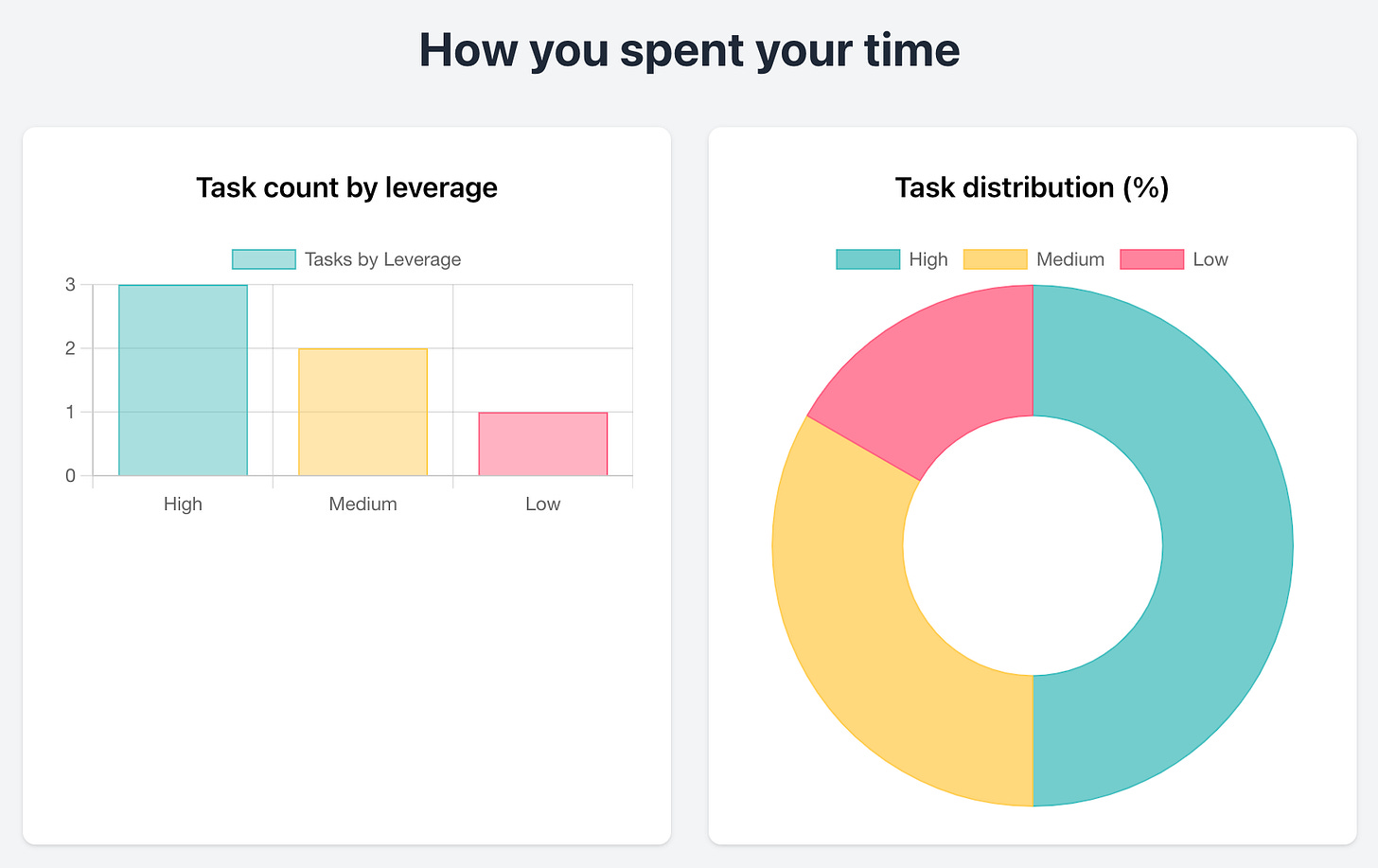
In conventional software development, wireframes serve three crucial purposes:
Facilitating team discussions by providing a shared visual
Acting as blueprints for subsequent design and development stages
Serving as economical prototypes that can be easily modified until alignment is reached, reducing costly changes during engineering
I am an expert in wireframing and have produced countless mockups for different projects ranging from web design to strategic foresight exercises.
Yet, as I navigate the AI-driven landscape, I do ponder the role of wireframes. Are they still as indispensable as they once were, or have they become obsolete in certain scenarios?
Let’s explore this through an experiment I conducted.
An Experiment: Building a Task-tracking App without Wireframes
I set out to build a task-tracking app prototype in a single day, entirely powered by AI. Using Cursor, one of the most popular AI code editors, I created a functioning web app without writing (or even knowing how to write) a single line of code. I also skipped traditional steps like providing mockups or wireframes as references.
Here was the process:
I started with a clear idea in my mind.
I outlined the requirements to Cursor.
Following Cursor’s instructions, I connected to Firebase, GitHub, and Vercel.
I provided text-based prompts for functionality and UI.
I copied and pasted the generated code into GitHub (with automatic deployment to Vercel).
I reviewed the prototype and repeated steps 4-6 as needed.
In just one day, I had a functioning prototype with a reasonable layout, UI elements, and colour coding (see a sample screen below). While a professional touch would be necessary to bring it to the finishing launch line, the speed and efficiency of the process were remarkable.
It was by far the most rapid prototyping exercise I’ve ever experienced, on my own or with a team.
Why Wireframes Weren’t Needed
In this specific case, wireframes would not have added value. Here’s why:
AI outputs doubled as mockups
Instead of following the traditional linear process - concept, wireframe, mockup, prototype - I went straight to building. The AI-generated outputs acted as mockups on which I could iterate directly, eliminating the need for wireframes altogether.Solo workflow
Working alone meant I could iterate freely and quickly. This would never have happened in a team environment. Feedback collection, prioritization, and structured change requests would have been necessary.Simple requirements
This web app consisted of just three pages, each using standard UI elements. AI imported ready-made modules. This simplicity made it okay to rely on AI-generated designs without wireframe guidance.User-centric prompts
My prompts were extremely detailed and user-centred due to my experience in creating requirement documents and user flows. Effective and relevant prompting was critical for AI to produce a logical and usable product as envisioned.
Why Wireframes Are Still Valuable
Following the same logic why wireframes were unnecessary in my experiment, below are the reasons why wireframes remain very necessary in various scenarios:
Complex innovative products
Due to the simplicity of my task-tracking web app, AI could produce almost-ready mockups without human input. However, AI code editors were not meant to do anymore beyond that. When it comes to designing innovative and complex products, wireframes are definitely needed from conceptualization through to early design stages.Multiple stakeholders and iterative feedback
In my experiment, I enjoyed the freedom hence speed of a solo worker. By contrast, in team projects, prototype iterations involve feedbacks from many parties that must be consolidated, reviewed, weighed, and prioritized. Instant AI-generated changes do not fit in this managed process. Wireframes remain the most cost-effective tool to solicit feedback as they can be easily updated with strict version control.Business alignment and early validation
Outside of the design context, wireframes also serve a business role - as a storyboard to facilitate business discussions such as requirement gathering and concept validation. All these activities are designed to minimize risk before moving onto expensive engineering work.
Final Thoughts
I truly enjoyed my experience rapidly building an interactive prototype using only AI sans wireframing. The result was surprisingly satisfactory.
For solo founders working on simple products, this streamlined, prompt-driven development approach allows quick iterations on the fly.
However, for larger teams with complex product concepts, wireframes do and will remain as important as ever. Skipping wireframing will mean costly adjustments down the road - a lesson still very relevant in today’s product creation landscape.
Do you agree?




It's good to see you reflecting on wireframe's value from both sides, as AI's been challenging the conventional product design workflow.
I love experimenting too! It’s an exciting shift, and I can see the whole product development process becoming even more augmented in 2025. While wireframes will have their place in certain scenarios, early iterations can become far more dynamic. And adaptive. Super exciting. 🤗